 Abraham Lincoln
If given the truth, the people can be depended upon to meet any national crisis...
Abraham Lincoln
If given the truth, the people can be depended upon to meet any national crisis...
 Guildford news...
for Guildford people, brought to you by Guildford reporters - Guildford's own news service
Guildford news...
for Guildford people, brought to you by Guildford reporters - Guildford's own news service
Learning More About His Father’s Time In Dad’s Army
Published on: 6 Nov, 2016
Updated on: 10 Nov, 2016
By David Rose, with much additional details by Frank Phillipson
Many of us must wish we had asked our late parents more about their wartime experiences, but never got around to doing so.
Regular reader John Lomas, who grew up in Byrefield Road, Stoughton, and who now lives in Lancashire, knows that his father worked in reserved occupation at Drummond’s machine tool firm in Rydes Hill and that he was also in the Home Guard.
John wanted to find out exactly when his father (also called John, but known as Jack) had joined up. He learned that a search for his father’s service record could be made (costing £30) via the Army Personnel Centre, Support Division, in Glasgow.
He paid the fee and the search luckily came up with his father’s enrolment form in ‘A’ Company of the 4th Battalion (Guildford), Surrey Home Guard.
The form also gave the all-important date of his father’s enrolment – June 6, 1942. It is signed by his father and also ‘A’ Company’s commander Major H. G. Stafford.
John says: “I was born in February 1942, and whether that led to Dad enrolling in June 1942, I don’t know! Maybe there was some ruling about reserved occupations being restricted from joining or only when the workload permitted, possibly by new workers becoming available.”
In fact, it is most likely that John’s father was conscripted under the December 1941 National Service Act. Under the Act men up to the age of 60 were required to carry out some form of National Service and for those under 51 this could be military service.
The main reason was that there was a shortage of men volunteering for police, civil defence or Home Guard duties. Conscription into the Home Guard was only carried out in areas where units were below strength which was particularly so in the south and east of England. Conscripts were required to serve a maximum of 48 hours per month.
In the rare book The Guildford Home Guard, written by Col G. W. Geddes, (who commanded the battalion), in July 1940 ‘A’ Company patrolled the general location where John Lomas lived and worked.
The book notes that on that date ‘A’ Company was commanded by Mr H. G. Stafford (titled “Company Commander” as military ranks were only introduced in the early months of 1941), of Bareilly, Tilehurst Estate. It was formed of three platoons:
No.1 Platoon was commanded by Mr W. E. Haggar and its area of responsibility is noted as “Westborough, Stoughton and the London (Woking) and Aldershot railway lines inclusive” HQ at Hull’s Farm, Worplesdon.
No.2 Platoon was commanded by Mr D. J. Morris, but the book does not give its specific area of responsibility, but was possibly the same as No.1 Platoon’s as its HQ was also at Hull’s Farm, Worplesdon.
No.3 Platoon was commanded by Mr A. D. Crosby, and the area its men covered is listed as “Stoughton, Stoke Hill Park, Railway inclusive and River Wey inclusive”. HQ at Stoke Hill Farm.
The size of Home Guard battalions and companies did not equate to the size of the same regular army units which were usually of a fixed number of men. Home Guard units also varied considerably in the number of men they were made up of from area to area.
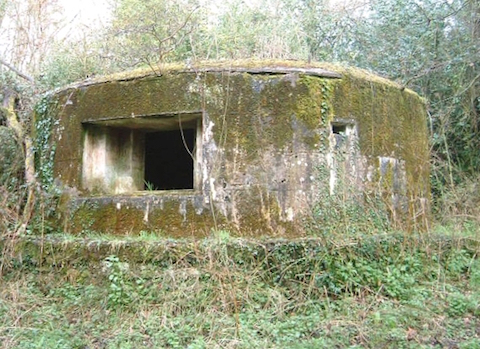
A six-pounder drum pillbox still in position off East Shalford Lane. Picture courtesy of the Pillbox Study Group.
In the summer of 1940 the defence of the south-east consisted of a line of coastal defences and then behind that, along the southern face of the North Downs, the GHQ Stop Line. This was an anti-tank line designed to counter any enemy forces that had broken through from the coast. Both would normally be manned by the regular army.

Anti-tank traps in the woods between the River Wey and the Spectrum leisure centre, still in position today. Picture by David Rose. Click to enlarge in a new window.
It consisted of various types of pillboxes with road blocks, anti-tank ditches and obstacles, barbed-wire entanglements and minefields.
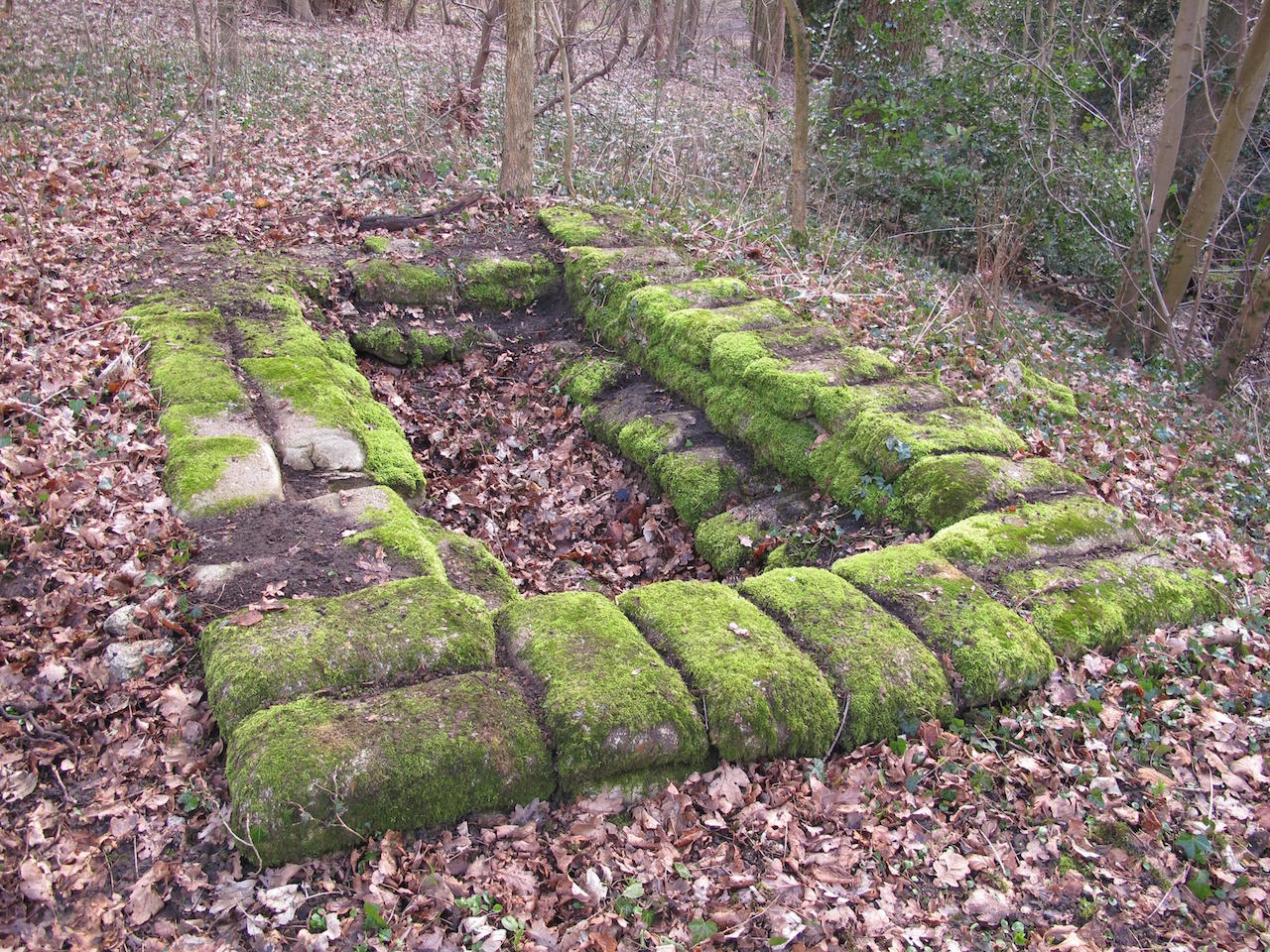
Rifle pit in the woods near Spectrum leisure centre. Picture by Edward Combs, courtesy of the Pillbox Study Group. of Click to enlarge in a new window.
With a limited number of troops and equipment the static line of defence was not desirable but was the only solution at that time.
When the GHQ Stop Line reached the Shalford area it then followed the line of the River Wey through Godalming and Elstead around the Aldershot Command area.
On July 31, 1940 the Guildford Home Guard took responsibility for manning the Stop Line within the limits of the borough boundary.
By late 1940 the GHQ Stop Line had been sidelined with more equipment becoming available including tanks allowing a mobile regular army force to counter the invaders.
Instead of the fixed line of defences tying down large numbers of troops, a system of Nodal Points all manned by the local Home Guard were established. They were mostly comprised of towns and villages being used as a series of strong points to block the enemy’s use of the road network. While tanks and troops could travel across country, artillery, supply lorries and other transport would be confined to using the roads.
Nodal Points were categorised as A, B or C depending on the defences allocated to them and the time they were expected to hold out. Early in 1941 work was concentrated on developing these with all round defences so that even if they were bypassed they could still hold out and remain a thorn in the side of the enemy.
Category “A” Nodal Points were expected to hold out for seven days and were often placed on a Stop Line so they could make use of the defences already constructed. Category “B” points were expected to hold for three or four days and would have had mainly infantry defences and obstacles, while Category “C” points were mainly consisted of obstacles only and expected to hold for a day or two.
In June 1941 the 4th Battalion was reorganised into six companies ‘A’ to ‘F’ and one Factory (Dennis’s) Guard Company designated ‘G’. This company also had platoons from other factories and organisations such as Vokes, the Borough Electricity Department, the Borough Surveyor’s Department and the Technical College.
From August 15, 1941 the Infantry Training Centre of the Queen’s Royal Regiment moved out and the defence of Guildford as an “A” Nodal Point became the sole responsibility of the battalion.
‘A’ Company now became responsible for No.1 Sector in the Nodal Point defence area. This covered the eastern bank of the River Wey in the vicinity of the Aldershot & District bus garage, the electricity works and the cricket ground all along Woodbridge Road as well as Dapdune Wharf.
Within this sector it manned eight ‘garrison’ localities manned varyingly by between 10 and 32 men. Sixty men were held back in “Battle Stations” and 72 in reserve divided equally at the Joseph’s Road football ground and at Stoke Park Mansion.
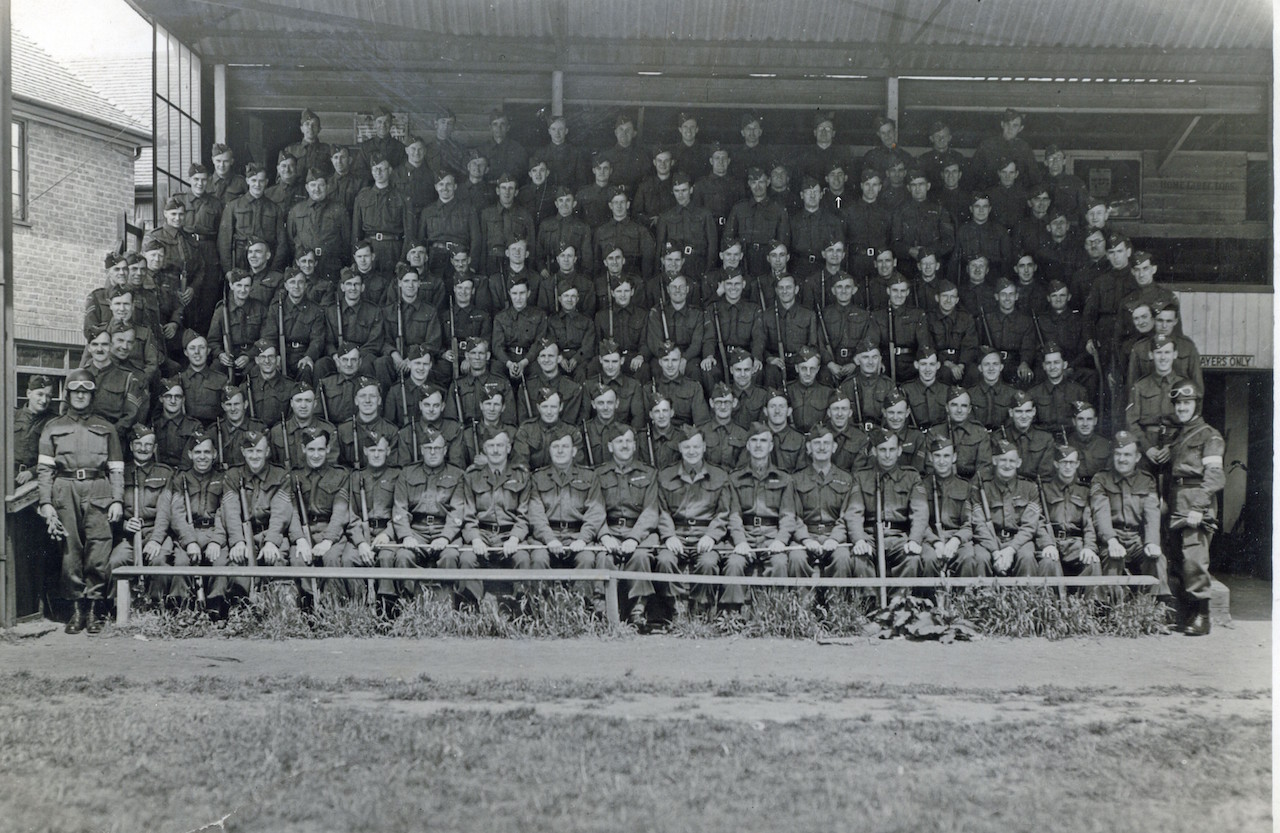
Home Guards pictured at Guildford City’s football ground in Joseph’s Road. John ‘Jack’ Lomas is in the second row down from the top, fifth from the right. The inset picture of him seen at the strat of this story is taken from this picture. Click to enlarge in a new window.
The company overall consisted of over 340 men but for the purposes of planning this was reduced by 20% to allow for those who could not leave their civilian job immediately, those who had to travel or those who were sick.
The previous work of patrols and guarding vulnerable locations such as the water works, and so on etc, still continued as there was still a need to counter possible paratroop drops. They would also check identity cards and lookout for strangers to the area.
The Nodal Point was divided into five sectors of defence and areas of responsibility allocated to “A”, “B”, “C”, “D” and “F” Companies, “E” Company being held in general reserve. (See map above).
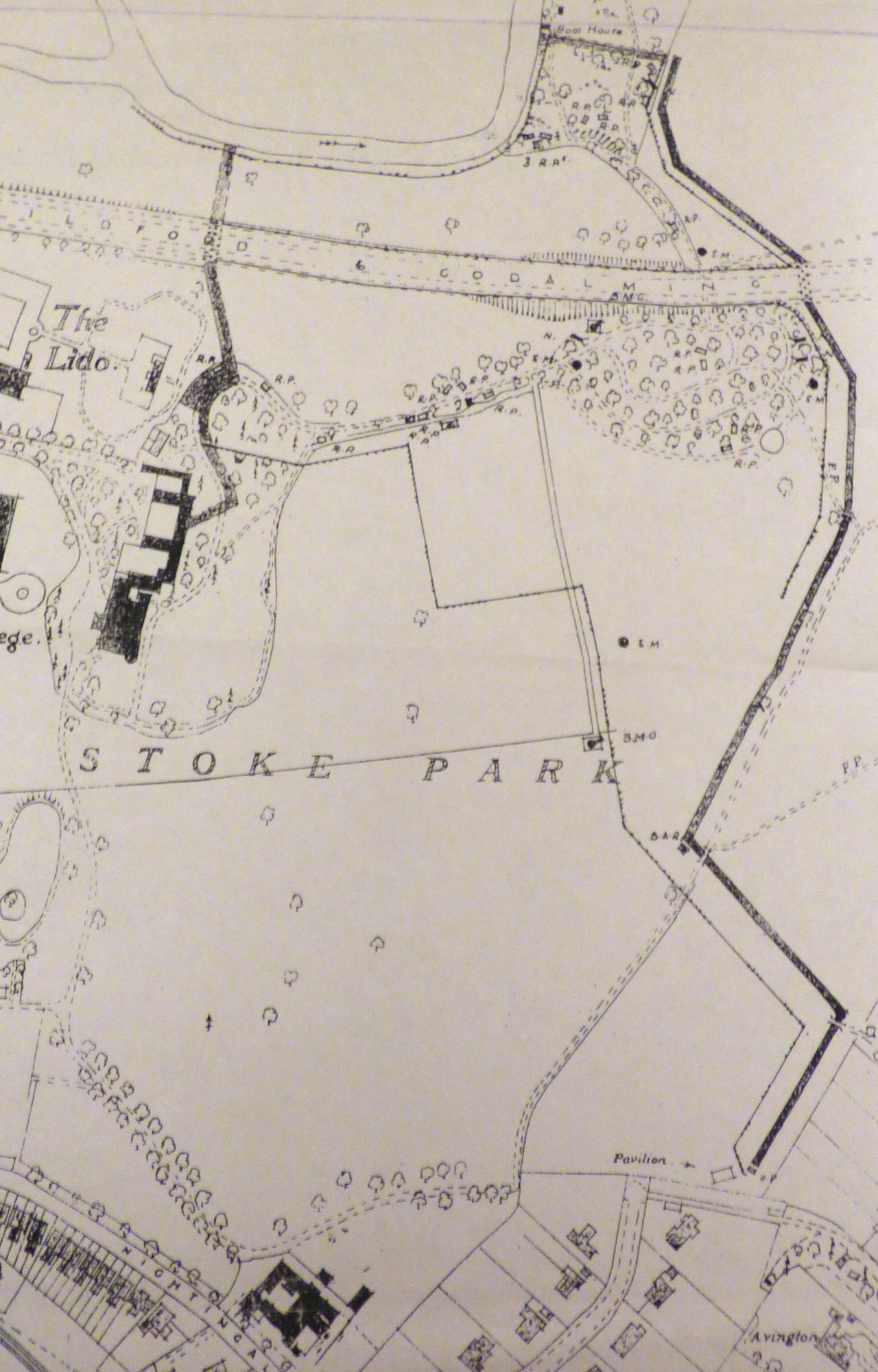
This map shows Stoke Park and some defence features. The zig-zag lines marked in black show ditches. Part of the one on the right can be traced today as the line of it is now an asphalt footpath. Published in the book Guildford The War Years 1939-45, by Graham Collyer and David Rose, with permission of the Surrey History Centre. Click to enlarge in a new window.
In November 1941 the definitive perimeter of the Guildford Nodal Point was decided upon and soon work started on the anti-tank ditches, road blocks and barbed-wire entanglements. The battalion had some sections based in positions outside the perimeter of the Nodal Point.
In June 1943 Major Stafford resigned from the Home Guard and ‘A’ Company was then commanded by Major A. D. Crosby MBE, with its “Battle Headquarters” as the “Football Pavilion, Joseph’s Road”.
Only “A” Company/No.1 Sector had its HQ at Joseph’s Road so it is likely that the photo (seen above) is of that company.
On September 4, 1944 the War Office issued a letter to all Home Guard units that they would be stood down in the near future.
The Home Guard was officially stood down and held as an inactive reserve on December 3, 1944 and were only finally disbanded on December 31, 1945.
Responses to Learning More About His Father’s Time In Dad’s Army
Leave a Comment Cancel reply
Please see our comments policy. All comments are moderated and may take time to appear. Full names, or at least initial and surname, must be given.
Click on cartoon for Dragon story: Public Asked for Views on SCC’s Proposal for Reduced Speed Limits


Recent Articles
- Highways Bulletin: Smarter Planning for Better Bus Journeys in Surrey
- Letter: Will GBC’s New Planning Document on Building Heights Be Effective?
- Proposed New Leisure Contract Should Improve Facilities and the Council’s Income
- Witness Appeal Following Fatal Collision
- Celebration at Guildford Cathedral of Its Latest and Future Church Leaders
- Photo Feature: Now You See It…
- Letter: Snail-paced Progress for Full Weir Repair
- Mayor’s Diary: July 5 -July 20
- One Homeowner Recompensed but Fight Continues Over Waverley CIL Charges
- Letter: Fine Those Guilty of Anti Social Behaviour


Recent Comments
- Jan Messinger on Public Asked for Views on SCC’s Proposal for Reduced Speed Limits
- Fiona White on GBC Asks Residents for Views on Its Draft Building Height Guidance
- Dave Middleton on Letter: Fine Those Guilty of Anti Social Behaviour
- Carina Coverly on GBC Asks Residents for Views on Its Draft Building Height Guidance
- M Durant on Online Event Will ‘Help Residents Have Their Say On Local Government Reorganisation’
- Jim Allen on GBC Working Hard To Mitigate Looming Weyside Urban Village Deficit
Search in Site
Media Gallery
Dragon Interview: Local Artist Leaves Her Mark At One of England’s Most Historic Buildings
January 21, 2023 / No Comment / Read MoreDragon Interview: Lib Dem Planning Chair: ‘Current Policy Doesn’t Work for Local People’
January 19, 2023 / No Comment / Read MoreA3 Tunnel in Guildford ‘Necessary’ for New Homes, Says Guildford’s MP
January 10, 2023 / No Comment / Read More‘Madness’ for London Road Scheme to Go Ahead Against ‘Huge Opposition’, Says SCC Leader
January 6, 2023 / No Comment / Read MoreCouncillor’s Son Starts Campaign for More Consultation on North Street Plan
December 30, 2022 / No Comment / Read MoreCounty Council Climbs Down Over London Road Works – Further ‘Engagement’ Period Announced
December 14, 2022 / No Comment / Read MoreDragon Interview: GBC Reaction to the Government’s Expected Decision to Relax Housing Targets
December 7, 2022 / No Comment / Read MoreHow Can Our Town Centre Businesses Recover? Watch the Shop Front Debate
May 18, 2020 / No Comment / Read More



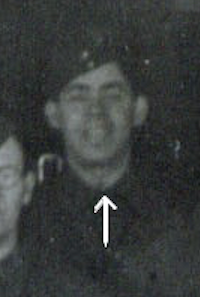

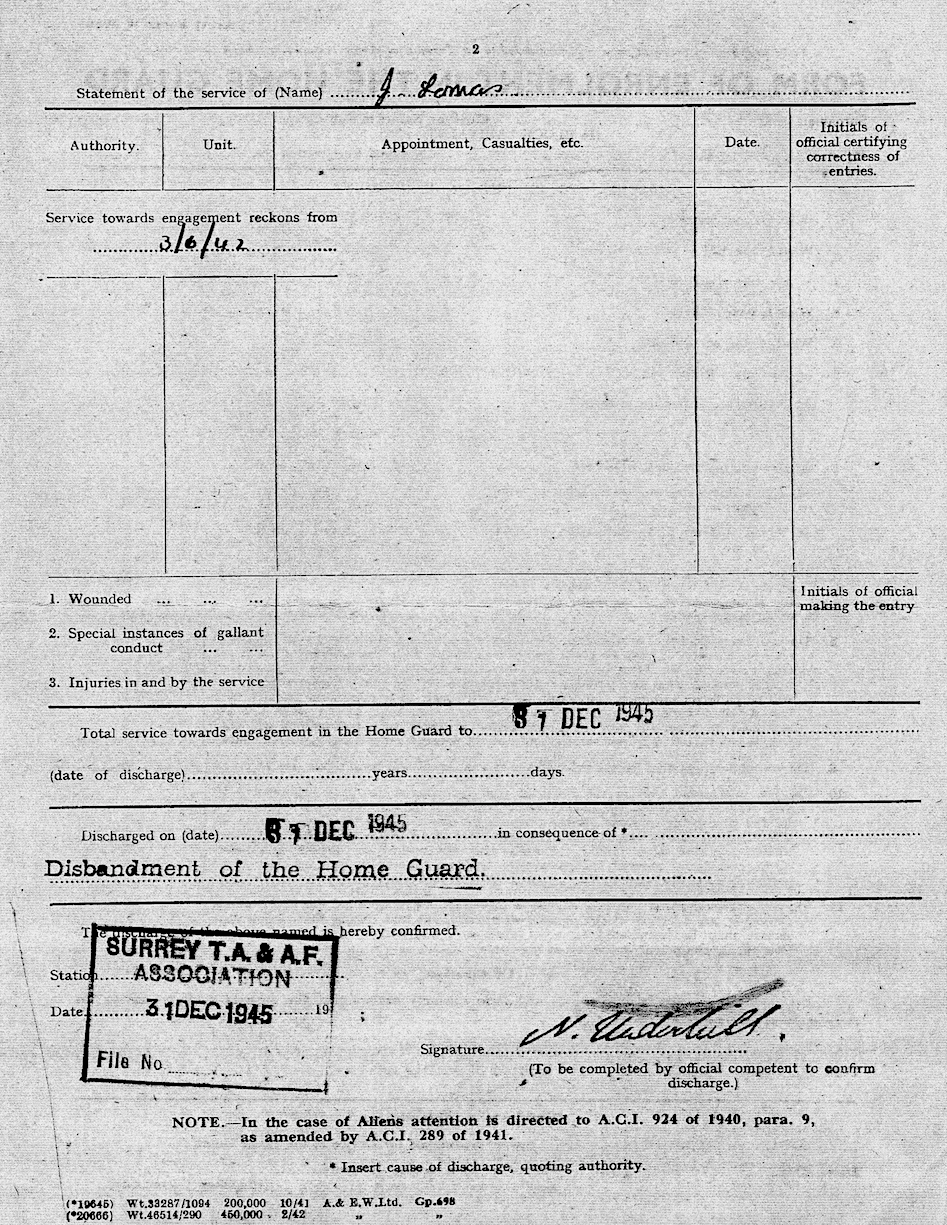
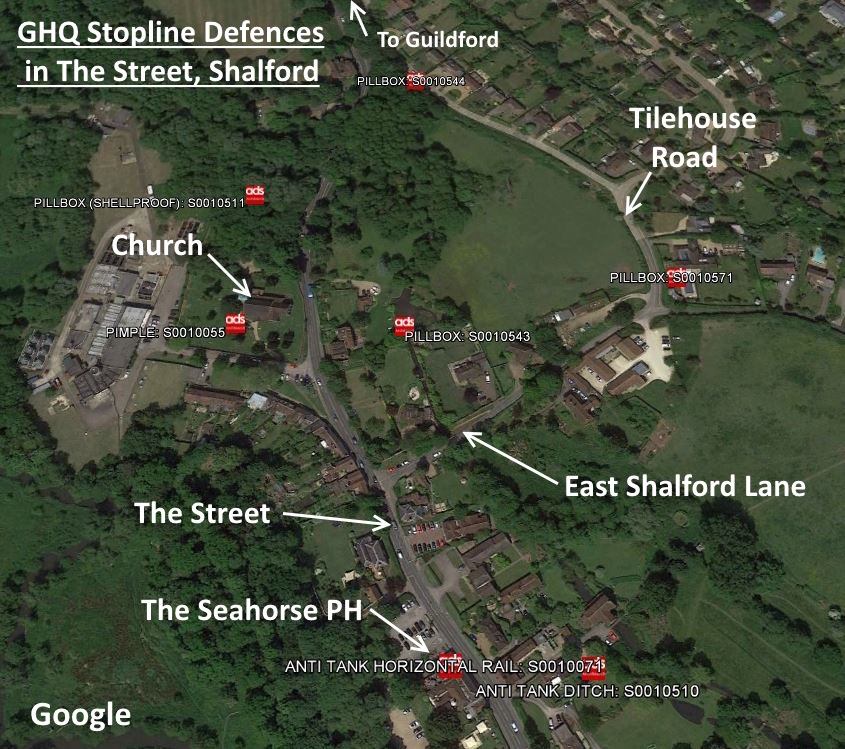
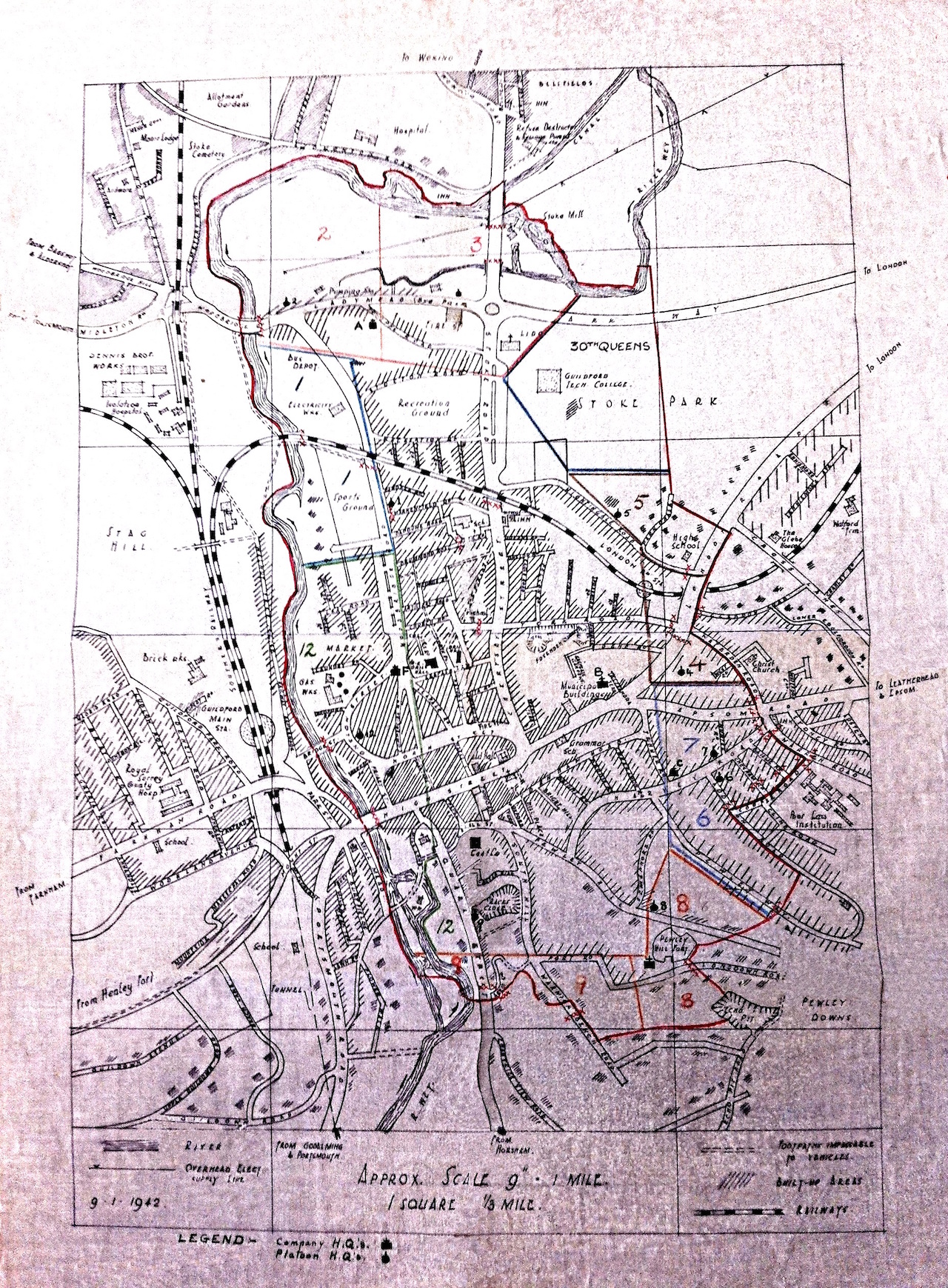




Jackie Montague
November 9, 2016 at 1:22 pm
My grandad was in the Home Guard. His full name was Denis Gilbert Avery and he was a telephone engineer for the Post Office in Guildford.
Can anybody tell me if he is in the picture?
[David Rose replies: I have a photo of Home Guards who worked at the Post Office in Guildford. I will email it to you.]
John Lomas
November 9, 2016 at 11:48 pm
Just out of interest, there was a Richard Avery at school with me, see https://guildford-dragon.com/2016/09/14/look-pupils-stoughton-schools-extra-names-required/
Could he be related to you as well?